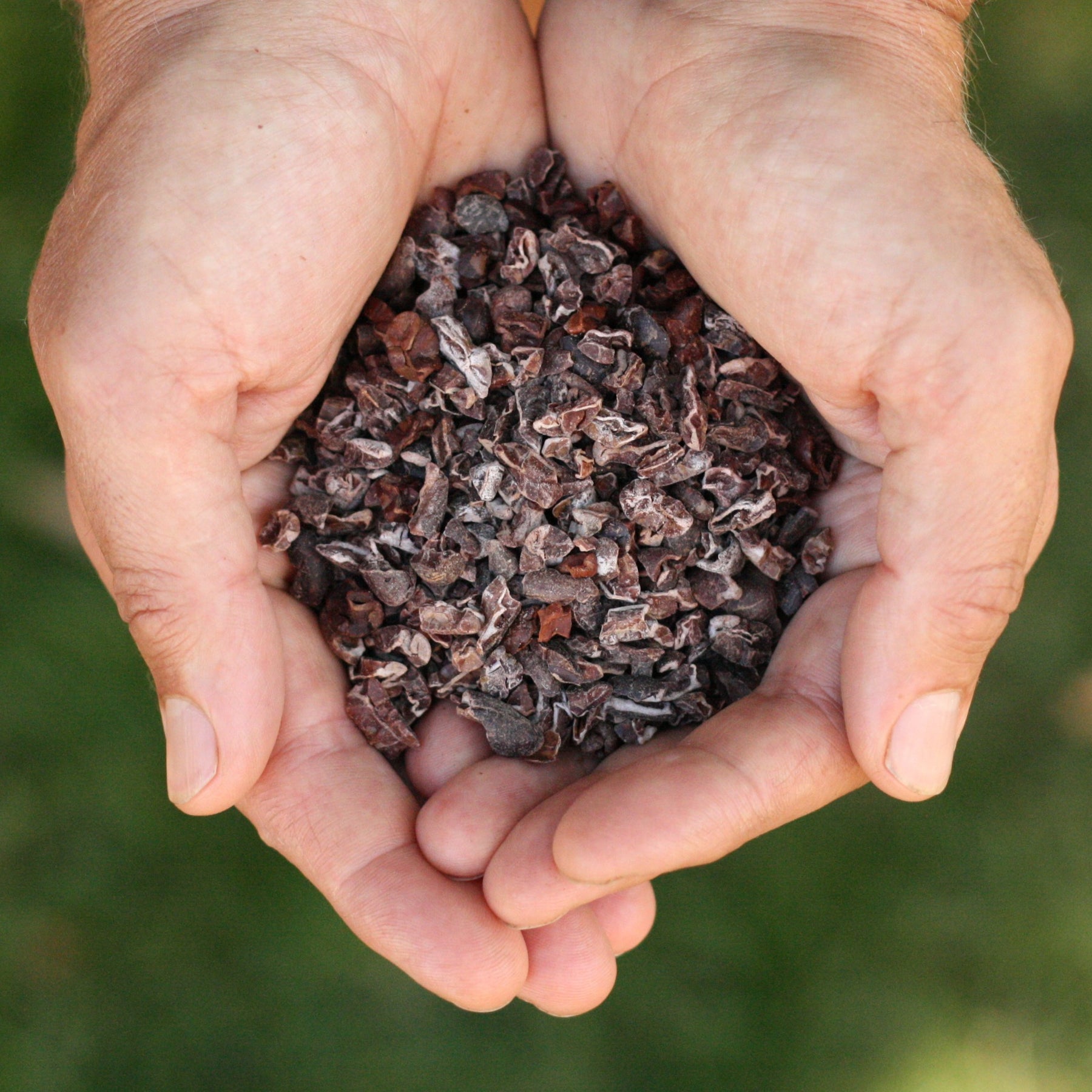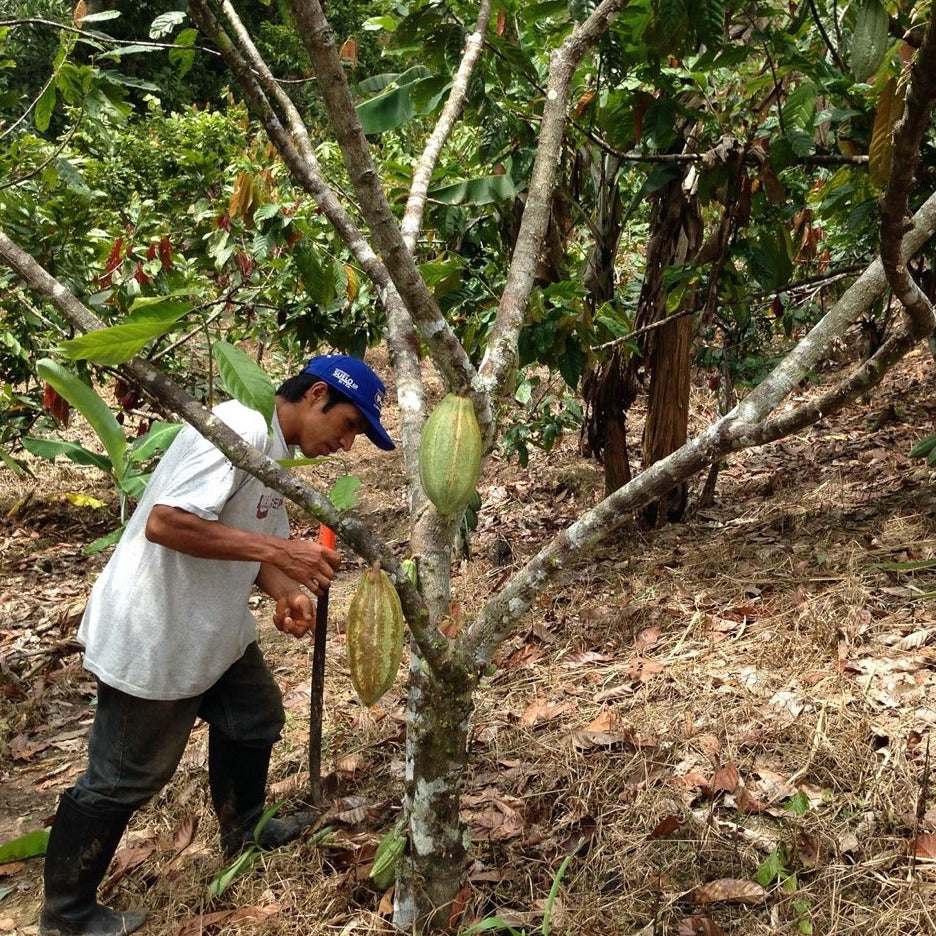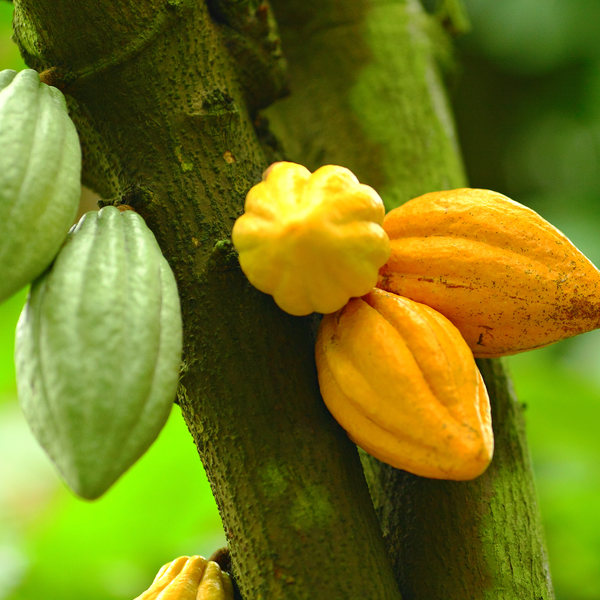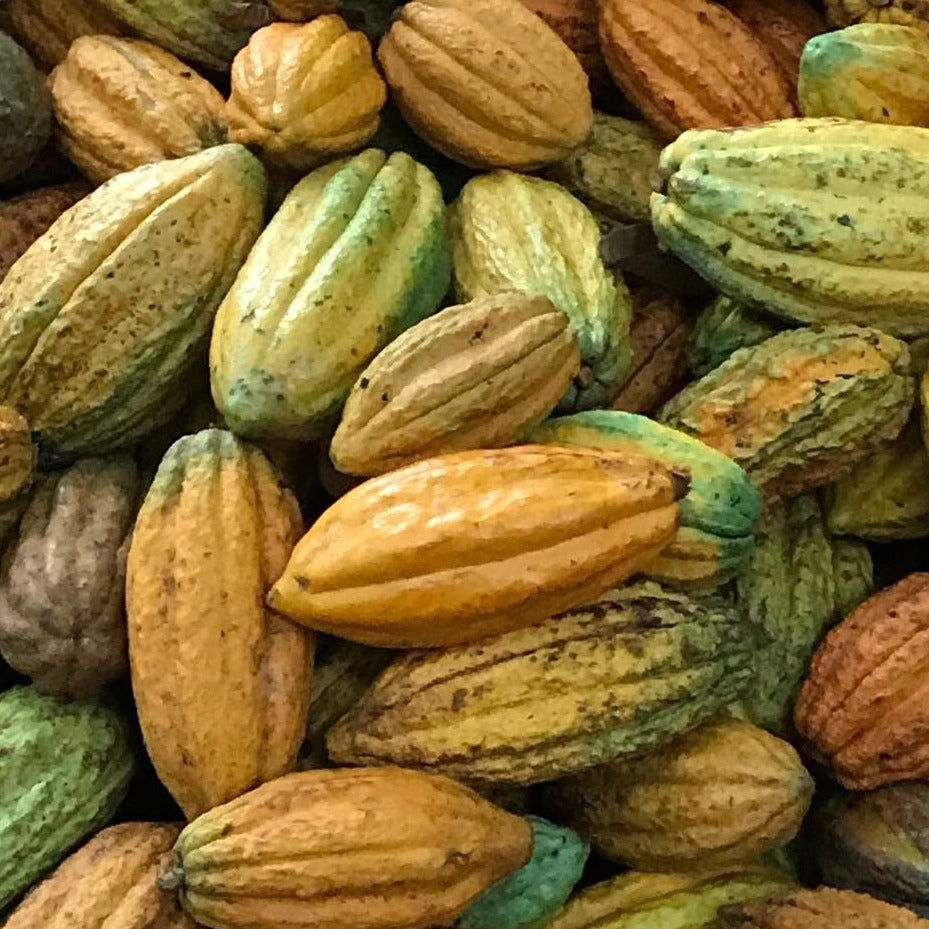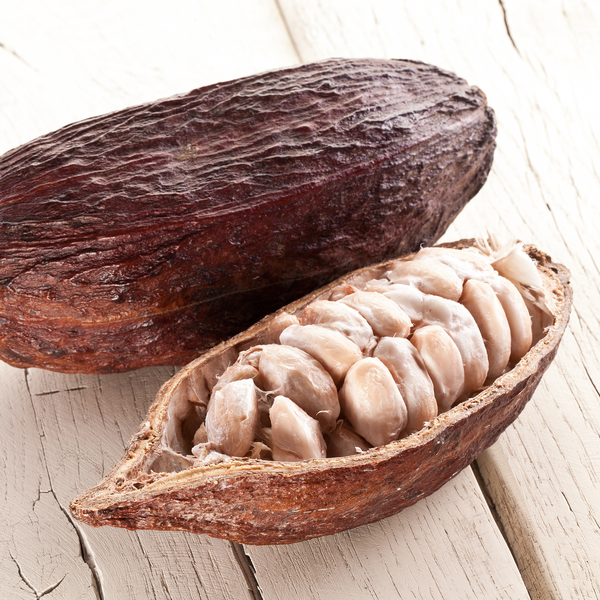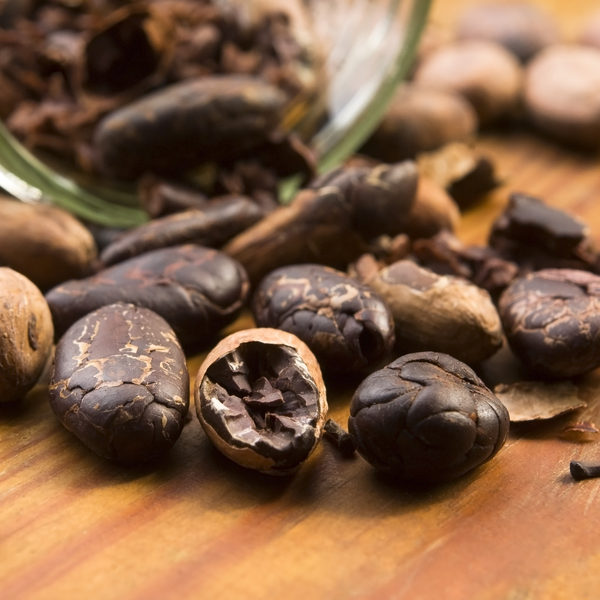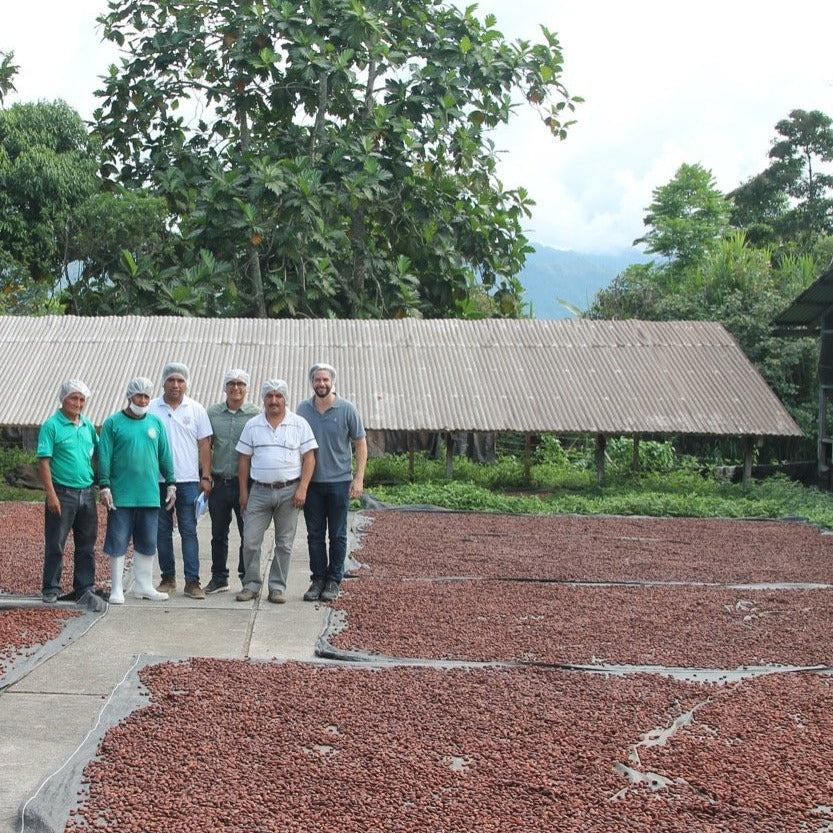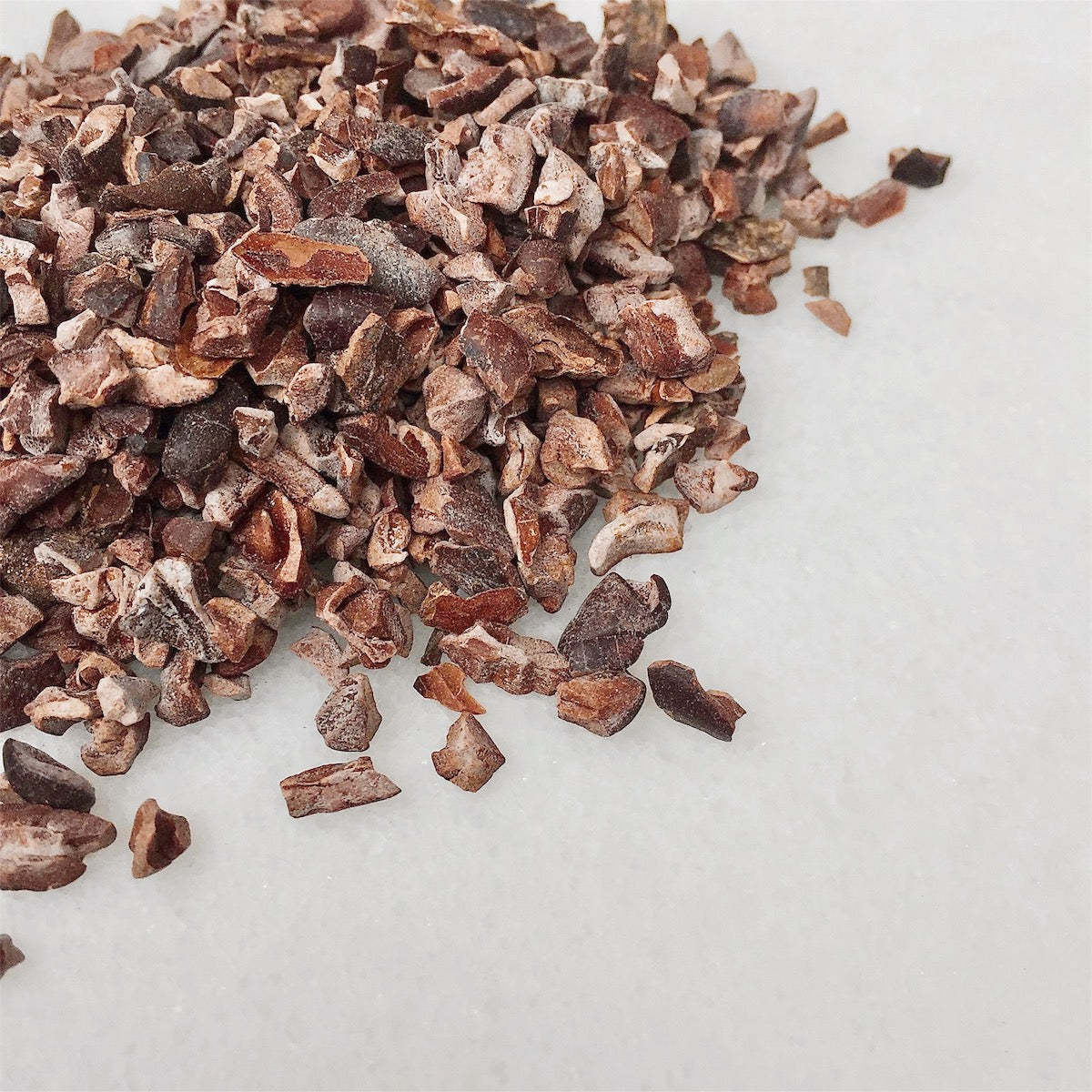No items in your cart
Continue ShoppingOur cacao nibs are chopped cacao beans from Venezuela. They undergo a fermentation process, this fermentation process is necessary to transform the flavour into what we associate with cocoa and chocolate. Without fermentation there would be no chocolate flavour!
These nibs are delicious and have a higher fat content than usual with a softer crunch than our usual nibs.
They are not certified organic, but they are grown organically in small farming collectives.
Cacao nibs are commonly used instead of chocolate in cookies, baked goods or smoothies.
Gluten, peanut and soy free.
More about organic here.
Click on "More Info" below to find nutritional info and links to recipes.
Cacao Recipes here
Cacao Nutrition here
Cacao Information here
Cacao Nib Recipes
Macadamia nut, oatmeal, cacao cookies here
Add to smoothies, yogurt, top on desserts any of your chocolate containing recipes.
Nutritional Information for Cacao Nibs
Cacao contains theobromine, a caffeine-like substance, but minute amounts of actual caffeine. Still, it is considered mildly stimulating and has anti-depressive properties.
It is rich in magnesium and people often crave chocolate because their bodies are magnesium deficient.
Cacao is known for its high favonoid content which helps protect blood vessel linings - helpful for those with high blood pressure.
It is also extremely high in antioxidants - as much as 10.9 mmol/100 g - which still isn't as high as herbs (known to have the most) but is higher than commonly known antioxidant-rich foods like cranberries & blueberries.
General and Historical Information About Cacao
Theobroma cacao (or just cacao) is a small 13-26 ft evergreen tree. It takes 4-5 years to bear fruit and offers about 20 pods per tree per year. About 20 pods are required for a pound of cacao paste. It has been cultivated and used by humans for more than 4,000 years, but shown to have grown long before the last ice age 21,000 years ago.
It is commonly thought to come from Mesoamerica but recent research shows cacao originating from around the Brazil Peru border where it could have survived the ice age. The earliest evidence of human consumption does still come from Mesoamerica where it looks like it was fermented into an alcohol and used for medicinal purposes in concoctions containing things like corn, chili, vanilla and honey. If you visit Oaxaca or the Mayan Riviera today it is easy to get a similar drink called Tejate.
Traditionally it was not only consumed but used as currency, in ceremonies, sacrifices and medicinally. It wasn't discovered by Europeans until the early 1500s but quickly became popular.
References
Haas, Dr. Elson and Dr. Buck Levin. Staying Healthy with Nutrition.New York: Ten Speed Press, 2006. Print
Nutrition Journal 2010, 9:3 doi:10.1186/1475-2891-9-3. "The total antioxidant content of more than 3100 foods, beverages, spices, herbs and supplements used worldwide." http://www.nutritionj.com/content/9/1/3
Pitchford, Paul. Healing with Whole Foods. Berkeley: North Atlantic Books, 2002. Print
WHFoods. "Is cocoa healthy, and if it is, why is it not included on the WHFoods list?." http://whfoods.org/genpage.php?pfriendly=1&tname=dailytip&dbid=179
Wiki. "Theobroma cacao." https://en.wikipedia.org/wiki/Theobroma_cacao
